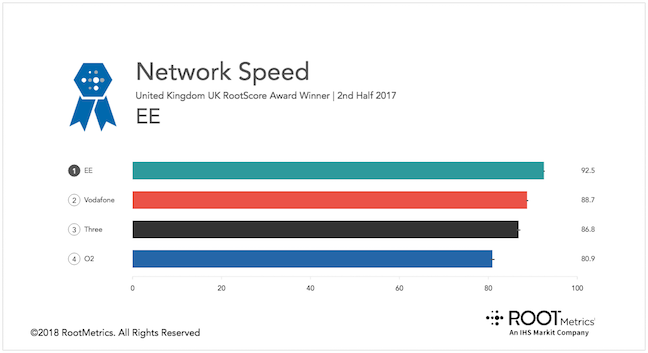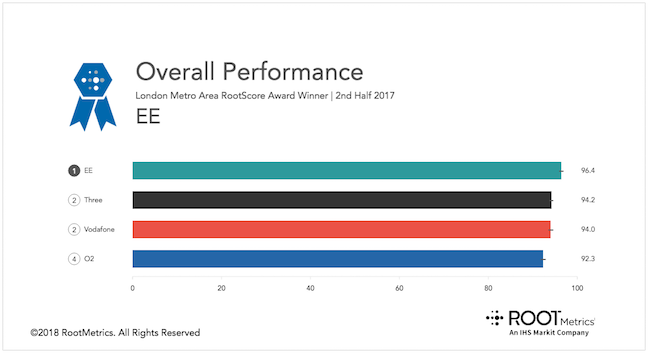The path to all-IP calls is not smooth. Just ask EE
The introduction of VoLTE saw EE fall from the top spot in RootMetrics’ network ratings for call reliability.
Three and Vodafone beat EE in the first half of last year for the reliability of calls – and both are relative laggards in implementing VoLTE, which takes voice calls off the circuit-switched network and onto the VoIP protocols. VoLTE, which as the name (Voice over Long Term Evolution) suggests requires a 4G (LTE) network, was itself late, and even later in the UK because of the handbags over spectrum. It means smartphones don’t have to fall back to 3G when using the phone app, as voice is just another application.
“Everybody sees the challenges switching to IP,” Scott Stonham, general manager for RootMetrics in Europe, told us. “There are risks of making a big sudden switch like that. You can decide to roll out gradually or go full throttle and do it all at once. The operators are taking different approaches.”
EE now shares voice category bragging rights with Three nationwide and in England and Scotland, while Three is a clear leader for call reliability in Wales.
RootMetrics found that in 16 major metropolitan areas, EE’s network was placing calls via VoLTE around 80 per cent of the time in the first half of last year, but in the second half it rose to 95 per cent. The proportion of Three calls routed over VoLTE is merely 4.4 per cent in 2H17, up from 2.7 per cent in the first half. Stonham says it’s targeted at poor indoor coverage areas.






While O2 ends up last out of four in most data examples, RootMetrics sees Telefónica’s network perform carrier aggregation more frequently than anyone else: 28 per cent of the time in the 16 metro areas surveyed, up from 22 per cent in the second half of the year. EE performed carrier aggregation around 21 per cent of the time.
Three has seen major improvements in data throughput as it continues to expand its LTE coverage. For example, it almost doubled its median upload throughput in London (to 11Mbps).
RootMetrics gathers data from over 700,000 tests from outdoor, rail, and 649 indoor locations. Galaxy S8 (and S7) phones were used for testing. You can find its full report here. ®






